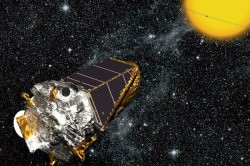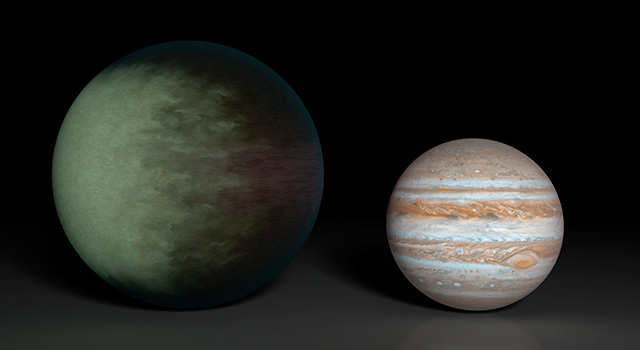Call it cloudy with a low chance of meatballs. The alien world Kepler-7b — a very reflective world in big telescopes — has clouds in its upper atmosphere. And scientists have actually been able to map those out, despite the planet’s great distance from Earth (at least 1,000 light-years away.)
It’s the first time scientists have been able to map out clouds on a world outside of the solar system. If we can see clouds, then we can begin to think about what a planet’s climate will be, making this an important milestone in understanding the conditions on other worlds.
“Kepler-7b reflects much more light than most giant planets we’ve found, which we attribute to clouds in the upper atmosphere,” stated Thomas Barclay, Kepler scientist at NASA’s Ames Research Center. “Unlike those on Earth, the cloud patterns on this planet do not seem to change much over time — it has a remarkably stable climate.”

Here’s how scientists got it done:
- Preliminary observations with the Kepler space telescope –which was designed to hunt planets until a second reaction wheel failed earlier this year — found “moon-like phases” on Kepler-7b. These showed a bright spot on the western hemisphere.
- NASA’s Spitzer Space Telescope measured Kepler-7b’s temperature using infrared light, calculating it at between 1,500 and 1,800 degrees Fahrenheit (815 and 982 degrees Celsius.)
- Something was clearly going on, as the planet is extremely close to its star; only 0.06 Earth-sun distances away. The temperature was too cool. They figured out that the light was reflected off cloud tops on the planet’s west side.
Another cool fact — Kepler-7b, like Saturn, would float if it was put in a big enough tub of water!
You can read more details in the technical paper online here. The study, which was led by the Massachusetts Institute of Technology, has been accepted to the Astrophysical Journal, but not published yet.
Source: NASA

